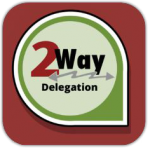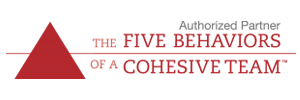Course Description
Have you ever wondered how to increase the effectiveness of your team? How to attract and retain the best talent? How to fully engage your employees? Successful organizations create environments in which people can achieve their potential through guidance, assistance, and support. Being a THINKing Partner is a skill that can be utilized to create that environment and to support team members in ways that allow them to contribute to their fullest. When being a THINKing Partner becomes an integral part of doing business, employees are engaged; this results in greater productivity and the retention of top talent. This course provides participants with the tools to be a THINKing partner, and it enables the performance improvement of all team members.
Being a THINKing Partner is often confused with teaching or giving feedback. Participants start the course by exploring the true definition of being a THINKing Partner and how it differs from other forms of communication. Being a THINKing Partner is an investment of time and effort; participants discuss the many benefits that can be achieved from using this skill in the workplace. They also identify several opportunities to be a THINKing partner in their work environment. Questioning and listening skills are central to effective being a THINKing Partner, so time will be spent learning and practicing these skills.
This course allows for several practice opportunities. Participants engage in mini-THINKing partner sessions, using actual opportunities that they have identified. They learn and use a five-step process to help them plan and structure their THINKing partner sessions for maximum benefit. Some opportunities are difficult, so participants discuss and practice effective techniques to overcome difficult situations that may arise.
Participants end the session by developing a strategy for personal continuous development, which they then share with a partner. This strategy will help ensure that their THINKing partner skills continue to grow, thereby increasing the skills and productivity of their team members.
Objectives
After completing this course, you will be able to:
- Discuss the benefits of being a THINKing partner.
- Identify being a THINKing Partner opportunities with direct reports and peers.
- Follow a three-stage Leader as Partner Model.
- Solicit the ideas of others during a THINKing partner session using effective questioning skills.
- Apply active listening skills during a THINKing partner session.
- Apply the five-step THINK model with direct reports and peers.
- Respond effectively to difficult situations using one of five techniques.
- Implement an action plan for formal and informal follow-up.
- Provide reinforcement and developmental feedback to direct reports and peers on a day-to-day basis
Duration
This course outline depicts an 8.5-hour agenda, including lunches and breaks.
Class Size
This course is designed for up to 20 participants.
Eight-Hour Course Outline
Below is the course outline with objectives and timing for an 8.5-hour agenda.
Objective and Topic | Timing | Elapsed Timing | ||
| Welcome and Icebreaker | 5 min | 5 min | ||
| Agenda and Objectives | 10 min | 15 min | ||
| Objectives: Identify the benefits of being a THINKing Partner | ||||
| Definition and Objectives | 15 min | 30 min | ||
| Teaching, Feedback, THINKing Partner, and Mentoring: The Difference | 15 min | 45 min | ||
| Being a THINKing Partner Experience | 20 min | 1 hr, 5 min | ||
| Benefits of Being a THINKing Partner | 5 min | 1 hr, 10 min | ||
| Objective: Follow a three-stage Leader as Partner Model. | ||||
| Being a THINKing Partner with Safety: Time Management | 30 min | 1 hr, 40 min | ||
| Three Stage Leader as Partner Model | 5 min | 1 hr, 45 min | ||
| Leader as Partner | 15 min | 2 hr | ||
| Prepare | 5 min | 2 hr, 5 min | ||
| Being a THINKing Partner Assessment | 15 min | 2 hr, 20 min | ||
| Objective: Identify being a THINKing Partner opportunities with direct reports and peers. | ||||
| THINKing Partner Moments | 20 min | 2 hr, 40 min | ||
| Break | 10 min | 2 hr, 50 min | ||
| Being a THINKing Partner Opportunities | 10 min | 3 hr | ||
| Creating a Being a THINKing Partner Environment | 4 min | 3 hr, 4 min | ||
| Engage | 1 min | 3 hr, 5 min | ||
| Objectives: Solicit the ideas of others during a being a THINKing Partner session using effective questioning skills. Apply active listening skills during a being a THINKing Partner session. | ||||
| Elements of Communication | 10 min | 3 hr, 15 min | ||
| Listening Skills | 20 min | 3 hr, 35 min | ||
| Questioning | 20 min | 3 hr, 55 min | ||
| Lunch | 1 hour | 4 hr, 55 min | ||
| Objective: Apply the five-step THINK Model with direct reports and peers. | ||||
| Being a THINKing Partner Model § Topic, Happening, Options, actioN, Know Success | 40 min
| 5 hr, 35 min | ||
| Checklist: Role-Play Demonstration of the THINK Model | 15 min
| 5 hr, 50 min | ||
| THIN K Skills Practice | 45 min | 6 hr, 35 min | ||
| Feedback and Follow-up | 20 min | 6 hr, 55 min | ||
| Break | 15 min | 7 hr, 10 min | ||
| Objective: Respond effectively to difficult situations using one of five techniques. | ||||
| Techniques for Being a THINKing Partner in Tough Situations | 10 min
| 7 hr, 20 min | ||
| Practice with the GROW Model | 45 min
| 8 hr, 5 min | ||
| Objectives: Implement an action plan for formal and informal follow-up. Provide reinforcement and developmental feedback to direct reports and peers on a day-to-day basis. | ||||
| Action Planning | 15 min | 8 hr, 20 min | ||
| Summary and Action Planning | 10 min | 8 hr, 30 min Including lunch and breaks | ||


